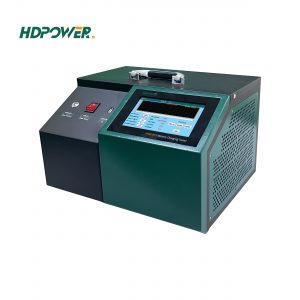Introduction: In mission-critical facilities, uninterruptible power supply (UPS) systems serve as the last line of defense against power outages. A UPS’s effectiveness hinges on its batteries, which must be kept in peak condition. Proper UPS battery maintenance is not just routine upkeep – it’s essential to avoid sudden backup failures and to prolong battery lifespan. By investing in the right maintenance tools and practices, organizations can ensure reliable backup power and maximize the return on their battery investment.
Why Regular UPS Battery Maintenance Matters
Neglecting battery maintenance can lead to serious risks, including unexpected power loss during critical operations. Batteries naturally degrade over time, and without regular testing or inspection, a weak battery may go unnoticed until it fails when needed most. Consistent maintenance allows early detection of issues (such as capacity loss or cell damage) and ensures batteries remain efficient and long-lasting, helping avoid costly downtime events. In short, proactive care of UPS batteries safeguards your facility’s uptime and extends the service life of the battery bank. Key reasons maintenance is critical include:
● Preventing Downtime: Regular backup power testing (e.g. periodic load tests) verifies that batteries can support the load during an outage, preventing surprise failures when utility power drops.
● Longevity and Reliability: Maintenance activities like cleaning connections, controlled charging, and balancing cells help extend battery lifespan by mitigating common degradation factors (corrosion, sulfation, imbalance).
● Safety Assurance: Faulty or poorly maintained batteries can overheat or leak. Routine checks and monitoring catch these issues early, ensuring the UPS operates safely without risk of battery fires or other hazards.
Key Tools for UPS Battery Maintenance
Modern UPS maintenance relies on specialized tools to test, rejuvenate, and monitor batteries. The UPS battery maintenance tools fall into several key categories, each serving a distinct purpose in preserving backup power health. Below we outline these tool types and how they contribute to battery reliability.
Battery Discharge Testers (Load Banks)
Battery discharge testers(Battery Load Testers) are used to perform controlled load tests on UPS batteries. These devices apply a constant discharge load to a battery or battery string to measure its actual capacity and performance. In practice, a battery discharge tester (often called a UPS battery tester) simulates real operating conditions by drawing current and observing how the battery responds. For example, technicians monitor the voltage drop, current output, and discharge duration during the test to evaluate if the battery can deliver its rated backup time. A significant voltage sag or short discharge time indicates a weak or aging battery that may need replacement.

Regular capacity testing with a discharge tester is crucial for UPS maintenance. It confirms that each battery can support the critical load, and it helps identify underperforming cells before they fail in service. In fact, industry standards recommend periodic discharge tests: NERC standard PRC-005 mandates full discharge testing of certain standby batteries every 3–6 years (depending on type), and IEEE guidelines suggest load-testing VRLA (valve-regulated lead-acid) UPS batteries as often as every 12–18 months. By using a battery discharge tester as part of maintenance, facility engineers can make data-driven decisions – replacing or servicing batteries based on actual capacity results rather than guesswork. This not only ensures reliable backup power when outages occur, but also optimizes maintenance budgets by focusing on batteries that truly need attention.
Battery Activators (Desulfators)
Over time, lead-acid UPS batteries (commonly used in backup systems) can suffer from sulfation – a buildup of lead sulfate crystals on the battery plates that reduces capacity. Battery activators, also known as desulfators or rejuvenators, are tools designed to recover batteries from this condition. A battery activator sends high-frequency, controlled electrical pulses into the battery to break down hardened lead sulfate crystals and restore them to active material. This pulsed rejuvenation process can effectively reverse sulfation without damaging the battery’s plates or electrolyte. Compared to traditional corrective methods.

Using a battery activator as part of preventive maintenance can significantly extend the life of lead-acid UPS batteries. Many professionals incorporate periodic desulfation cycles on standby batteries to improve charging efficiency and delay costly battery replacements. For instance, an aging battery bank that can no longer hold full charge might be restored closer to its original capacity by an activator, postponing the need for new batteries. Battery activators are especially valuable in environments where batteries spend long periods on float charge or in storage (common in UPS applications), conditions under which sulfation can quietly develop. By rejuvenating batteries and recovering lost performance, these tools help maintain adequate backup runtime and reliability. (They are typically used on lead-acid batteries; lithium-ion UPS batteries do not sulfate and have different rejuvenation needs.)
Battery Charge Testers
Battery charge testers are essential tools used to evaluate the charging behavior and efficiency of UPS batteries by applying controlled charging cycles and monitoring how the battery responds. Unlike discharge testers, which simulate load conditions, charge testers focus on how well a battery can accept and retain charge, detect charging abnormalities, and identify weak cells that may not fully recover during a charge cycle.

In UPS maintenance workflows, charge testers are particularly useful for diagnosing charging-related issues, such as reduced absorption voltage, increased charge time, or cells that consistently fail to reach full state-of-charge. For lithium and VRLA batteries alike, understanding the battery’s response to charging under different conditions (e.g. constant current, constant voltage) allows technicians to determine whether a battery is nearing the end of its life, or simply needs equalization or activation.
Advanced battery charge testers can simulate real-world charging protocols with adjustable parameters and record voltage/current curves during the charge process. Combined with data logging and graphical output, these tools enable accurate diagnostics and long-term performance tracking. In UPS environments, where float charging is the norm, a battery charge tester helps verify whether the UPS charger is functioning properly, and whether the batteries are still able to receive and hold charge efficiently.
Battery Balancers (Equalizers)
When batteries are connected in series to form the higher-voltage packs used in UPS systems (often a string of multiple 12V or 2V cells), keeping all those cells balanced is a challenge. Over time, individual cells can drift to different states of charge or slight voltage imbalances, especially in lithium-ion battery packs or large lead-acid banks. Battery Equalizers or balancers are maintenance tools that equalize the charge and voltage across each cell in a multi-cell battery system. In practice, a balancer module monitors each cell’s voltage and redistributes energy as needed – for instance, bleeding off excess charge from stronger cells or boosting charge into weaker cells to bring them into alignment. This active balancing ensures no single cell in the string is allowed to overcharge or over-discharge relative to the others, so all cells remain at a uniform state.
-300x300.jpg)
Balancing the cells has several critical benefits for UPS battery banks. First, it maximizes the usable capacity of the entire battery system – the pack’s performance is no longer limited by one weak cell, since that cell is continuously supported by the equalizer. Second, it prolongs the lifespan of the battery string: cells that would otherwise be overstressed (overcharged or deeply discharged due to imbalance) are kept within healthy ranges, avoiding accelerated degradation. Finally, balancing enhances safety and reliability, particularly for lithium-ion UPS batteries, where an imbalanced cell could pose a risk of thermal runaway or failure. By maintaining equilibrium, battery equalizers prevent conditions that lead to overheating or cell damage.
For traditional lead-acid UPS batteries, passive balancing is sometimes achieved by periodic equalization charging (applying a higher voltage charge to even out all cells). However, newer electronic battery balancer devices can provide a more precise, ongoing equalization without the risk of overcharge. These are especially crucial in large-scale UPS installations and modern lithium-ion UPS systems where built-in battery management systems (BMS) handle balancing. In either case, battery balancers ensure that each cell in the UPS performs optimally as part of the team, so to speak, thereby boosting overall backup system performance and lifespan.
Comparison of UPS Battery Maintenance Tools
To summarize the different maintenance tools and their roles, the table below compares each tool type, its primary function, and typical use cases in UPS battery maintenance:
| Tool Type | Primary Function | Typical Use Cases |
|---|---|---|
| Battery Discharge Tester(Load Bank) | Applies a controlled load to discharge batteries and measure their actual capacity and performance. | Routine capacity testing of UPS battery banks to verify backup runtime. Identifying weak batteries during preventative maintenance. Ensuring compliance with standards (e.g. periodic backup power testing per NERC/IEEE guidelines). |
| Battery Activator(Desulfator) | Sends electrical pulses or charge cycles to rejuvenate lead-acid batteries by breaking down sulfation and restoring lost capacity. | Battery reconditioning in maintenance shops or on-site for aging UPS batteries. Recovering performance of standby batteries that have been idle or float-charged for long periods (common in data centers and telecom). Extending battery service life and delaying replacements. |
| Battery Monitoring Module | Continuously monitors battery health parameters in real time, often with alarms for out-of-range values. | Live battery monitoring in critical facilities (data centers, hospitals, telecom hubs) to catch failing batteries early. Remote monitoring of UPS systems across multiple sites. Feeding data to predictive maintenance programs – replacing batteries based on condition. |
| Battery Balancer/Equalizer | Actively equalizes the charge among cells in a battery string, correcting any imbalances by redistributing energy (either dissipating excess or boosting low cells). | Maintaining large UPS battery banks (especially those with many cells in series) in data centers or industrial UPS systems. Essential for lithium-ion UPS battery packs (via BMS) to ensure uniform cell voltages. Used after battery replacements or repairs to equalize new and old cells. |
Applications in Critical Environments
UPS battery maintenance tools are employed across various critical power environments to ensure uninterruptible operation. Different settings have unique motivations for rigorous battery maintenance:
Data Centers: Server farms and IT facilities rely on UPS systems to prevent downtime and data loss. Here, battery monitoring systems often continuously track each backup battery’s status, and regular load bank testing is scheduled to verify that runtime capacity meets requirements. Using these tools, data center operators can avoid outages that would otherwise disrupt business operations and customer access.
● Hospitals and Healthcare: In medical facilities, lives may depend on reliable power for critical equipment. Battery testers and monitors are used to guarantee that UPS units supporting operating rooms, ICU devices, and emergency systems will work without fail. Maintenance teams in hospitals frequently test battery capacity and utilize battery activators to keep generator-start batteries and UPS batteries healthy, ensuring backup power kicks in during life-safety situations.
● Industrial and Manufacturing: Factories, refineries, and industrial plants use high-capacity UPS systems to protect against process disruptions or safety incidents during power loss. These environments benefit from all categories of maintenance tools: discharge testers to confirm that batteries can sustain controls or lighting, balancers to maintain large battery banks in machinery UPS, and monitoring modules to alert staff of any degrading battery in remote parts of the facility. The result is improved operational continuity and protection against costly downtime or equipment damage.
Other environments such as telecommunications central offices, financial services (banks), and energy utilities similarly employ UPS maintenance tools to uphold power reliability. In each case, the combination of testing, monitoring, reconditioning, and balancing ensures that the backup batteries will perform when an outage strikes, regardless of the industry.
Conclusion
In conclusion, maintaining UPS batteries is a multifaceted task – one that is greatly aided by the proper tools and techniques. UPS battery maintenance tools like discharge testers, activators, monitoring modules, and balancers give facility managers and engineers the ability to validate battery performance, restore battery health, and continuously oversee battery status. By integrating these tools into a regular maintenance program, organizations can significantly improve backup power reliability while also extending the life of their batteries. The result is peace of mind that when the power goes out, the UPS will seamlessly support the load as intended, with healthy batteries that won’t be the weak link.
By investing in quality maintenance equipment (for example, HD Power Test’s range of battery testers, activators, and monitoring solutions) and following best practices, professionals can ensure their UPS systems remain robust. In critical applications – from data centers to hospitals – this proactive approach minimizes the risk of unexpected downtime and protects both mission-critical operations and the bottom line. Reliable backup power starts with healthy batteries, and healthy batteries are no accident – they are the outcome of diligent maintenance with the right tools at hand.





